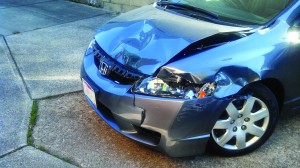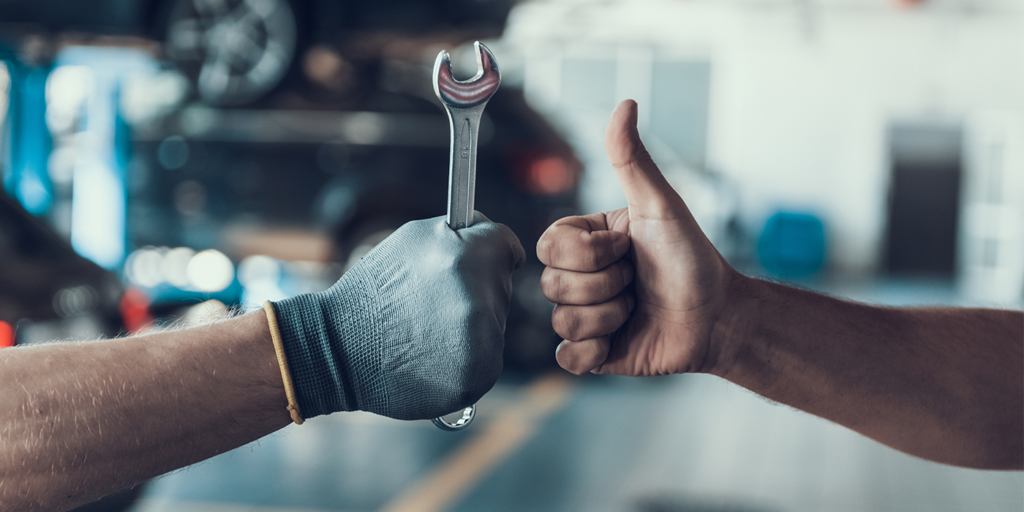
As I sit here starting to write yet another article, various topics and possibilities enter my mind. I certainly don’t want to fit in with the masses and write about a topic that already has been worn out. Nor do I believe in writing a self-serving article in the interest of pursuing my own agenda. My goal is – as it always has been – to give back to the industry and help others in this business.
There are two major topics on my mind that I feel need to be written about. The first is the divide between how shops repair vehicles. The second is a topic that doesn’t get spoken about enough: the labor rate in the collision industry compared to that of other contemporary industries. I believe the first divide actually fuels the disparity of the other.
Repairing a Vehicle
There are many different ways to repair a vehicle. However, that doesn’t mean you should try some of them. Unfortunately, there’s a wide chasm of different parts choices and methodologies when it comes down to how to repair a vehicle. As I’ve written before, occupant and vehicle safety should be the determining factor in choosing how to repair a vehicle.
I’ve had the pleasure, or at times displeasure, of seeing hundreds of shops and how they operate. The great divide on how they repair vehicles and the wide array of choices made is troubling. I’ve seen both ends of the spectrum, from overkill to downright unsafe repairs. Unfortunately, there’s no agreed upon set of industry standard operating procedures or norms on how to properly repair a vehicle.
This is something that has been discussed in the past, and I believe it’s something that’s much needed in our industry today. Unfortunately, there seems to be little common ground that currently exists when it comes to how to properly repair today’s everchanging and increasingly complex vehicles. Fixing cars today the way we did five, 10 or 20 years ago simply is not a good idea anymore. The collision industry should adopt a set of mutually agreed upon standards. Once that’s agreed upon, we next need to decide who’s going to come up with these standards. It’s my belief that that conversation needs to begin with the OEM. Take any advanced technological product of today, and it’s the manufacturer’s guidelines and recommendations that are taken most into account when it comes to how to work on or repair it. Imagine Apple not having a say in how to repair its wide line of products, or Glock when having to work on one of its firearms. Are vehicles no less technologically advanced than an iPhone or a Macbook? Are they less dangerous than an improperly repaired vehicle?
Why, then, are decisions on how to properly repair a vehicle left to an uneducated shop or a frugal insurance company? It’s trouble just waiting to happen, and there are tens if not hundreds of thousands of vehicles on the road today that potentially have had “improper” repairs done to them.
A Real Example
The divide on how to properly repair a vehicle today is simply too great. Let’s look at it from the smallest level and, for the sake of this discussion, let’s use the same vehicle. A 2015 Chevrolet Impala comes into the shop for repairs, and it has sustained damage to the front left corner, the airbags have deployed and it may have structural damage. The repair is about to be handed out to the shop. The technicians have varying degrees of training – some are trained, some are not and some have different training from different places. Some of the techs say the damage is repairable, while others think everything needs to be replaced. One of the techs says that this hit reminds him exactly of a 2008 Impala he worked on that was damaged in the same area.
Let’s look at it another way. The same vehicle is towed in, and the estimator is assigned to write the repair estimate. The first question the estimator asks is, “Which insurance company is paying for the damage?” The estimator knows the answer to that question will determine what “rulebook” he’ll mentally use when preparing the estimate. We all know how widely varying the rules are when it comes to how each insurance company pays to repair a vehicle. The rules can also change depending what state you’re in; region of the country; who your re-inspector is; and who the appraiser is.
Let’s complicate this even more. What kind of shop are you in? Is it a shop that invests in the latest equipment, is dedicated to training and uses OEM recommendations? Or are you in a “backyard” shop that doesn’t believe in or can’t afford training and pulls off a tree in the yard. Are you in a modern-looking shop but one that has an owner whose main goal is his own personal profit and who doesn’t spend the money on training or doesn’t have the time to worry about OEM recommendations because moving cars through production is all he cares about?
I drove the point home for a good reason – this is a very real example. We talked about the same car with the same damage, yet there are so many variables that should not be there. There should be one standard procedure for repairing that particular vehicle with that particular damage, and as an industry we should adhere to that.
As incredible as it seems, as I was writing this article, a post on an auto body Facebook site caught my attention. Truth is sometimes stranger than fiction, but someone just posted a series of photos of a newer model Cadillac getting a rear clip installed. Words cannot describe the disgraceful message this sends to the industry and to the public. I haven’t seen a vehicle get “clipped” in over 20 years, and for good reason. I cannot imagine what would possess someone to decide upon this course of action other than ignorance and the lack of care in helping retain the black eye this industry has had for so long. Somewhere along the line, whether its sooner or later, someone is going to buy that Cadillac and have no idea what someone did to that car. And that borders on criminal!
Just because you can doesn’t mean you should. Part of the reason our industry is disrespected and manipulated is because of people taking shortcuts and not repairing vehicles as they should. If everyone subscribed and was committed to performing repairs with a certain level of precision, there would be no acceptance of anything less in this industry.
Unprofessional operators in this business have decided to show the world some of the wrong things you can do. Not only are they wrong, but they’ve given insurance companies the idea that these are the things body shops do, so why should they pay us the right way? Where do you think partial replacements, open blends, partial refinishes, not blending and not R&I’ing came from? These things and more came from shops willing to do them to take shortcuts.
Labor Rates
The other great divide I spoke of at the beginning of this article is the suppressed labor rate of this industry as it relates to other industries. Look at this comparison in my geographic area:
Average Automotive Maintenance: $75 per hour
Average Automotive Repairs: $100 per hour
Average Body Repairs: $46 to $48 per hour
Compare these rates to the average rates for the following services:
Lawnmower repair: $99 service call and $80 per hour
Appliance repair: $90 service call and $90 per hour
HVAC repair: $90 service call and $120 per hour
Plumber: $75 service call and $90 per hour
Lawn care: $50 service call and $90 per hour
Maid service: $35 to $40 per hour
Massage: $90 to $125 per hour
It’s almost unbelievable to me as I sit here and write it, but it’s true. We all know the investment in training, tools, equipment and insurance we require to run our businesses. A labor rate that has this great divide is staggering. In 1995, when I had my first general manager’s position, the labor rate was $34 per hour, and here we are 20 years later and it’s $46 to $48. Meanwhile, the rates for the above mentioned trades with little or no investment have at least doubled. I’ll let you form your own conclusion as to why this is.
A Good Start
A good start as to how to change these trends would be to conduct yourself and your operation in a professional manner. Investing in training and OEM repair recommendations is a must. There should be one way to properly repair a vehicle, and that should be however the vehicle manufacturer recommends. As an industry, we need to start conducting ourselves in a respectable, professional manner. Unfortunately, until we do, we can only expect to retain the low rung on the totem pole that we currently occupy. We’re divided as an industry, and we’ll continue to be defeated piecemeal if we don’t change that.














